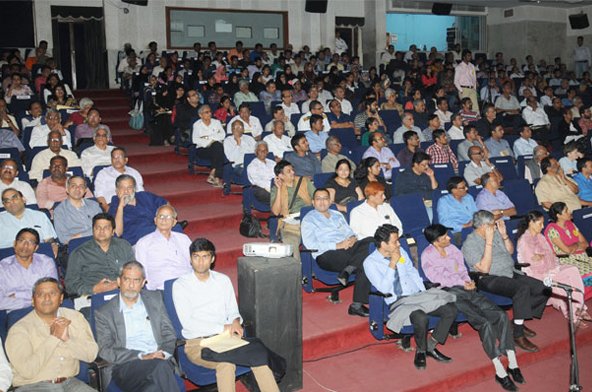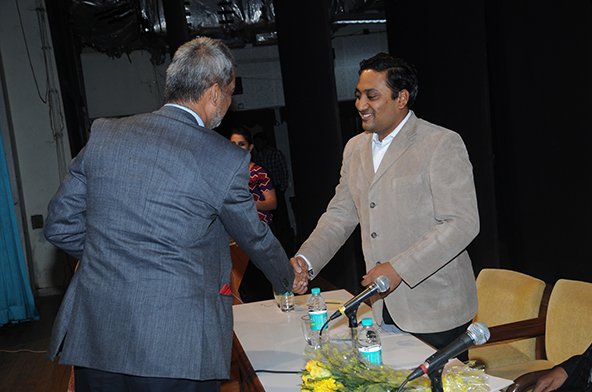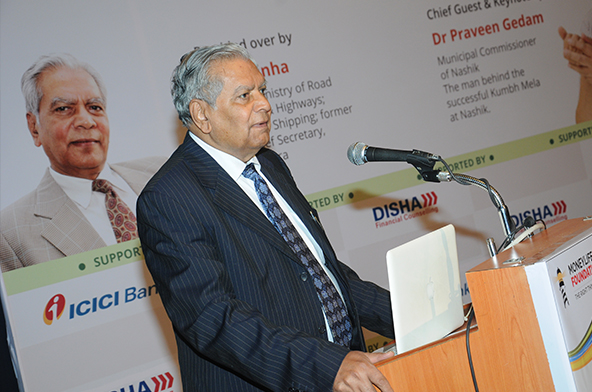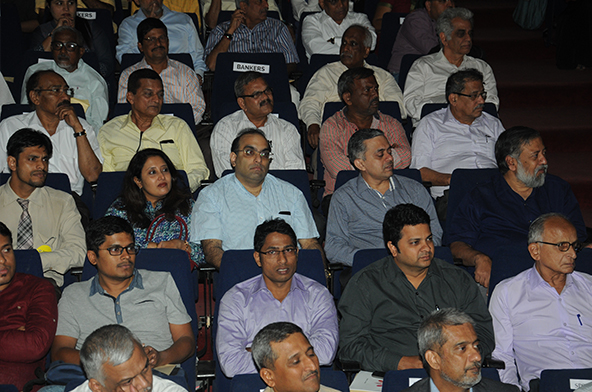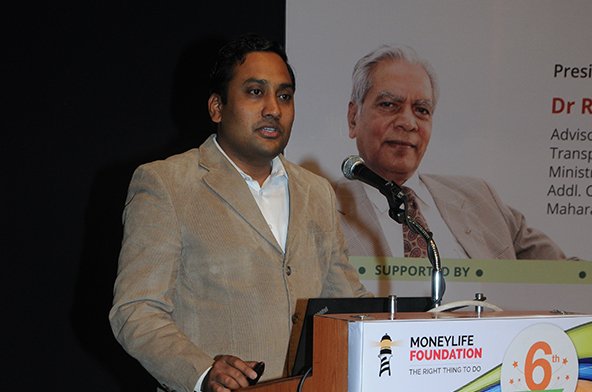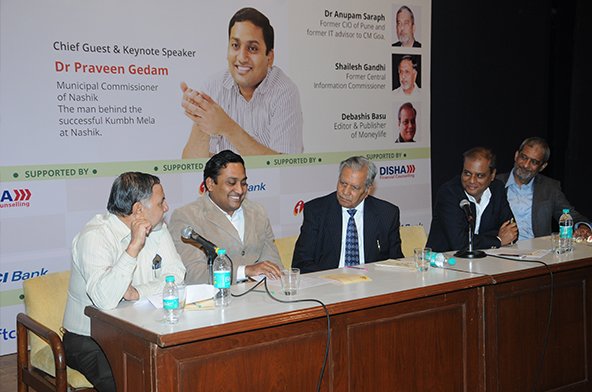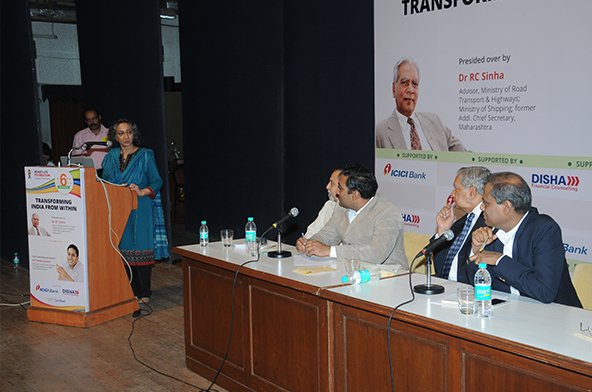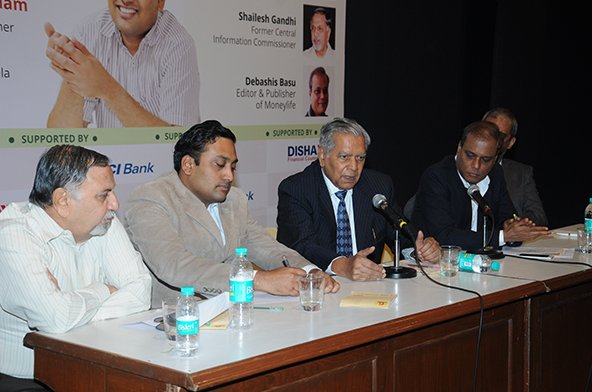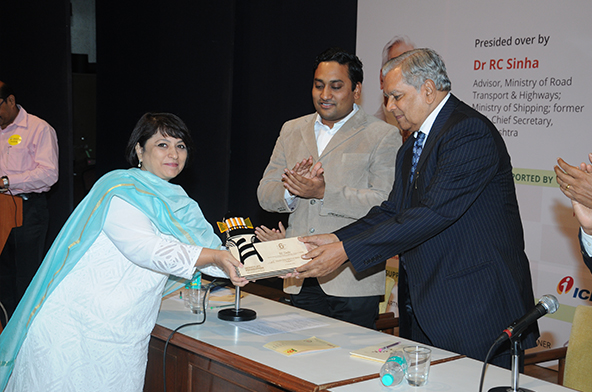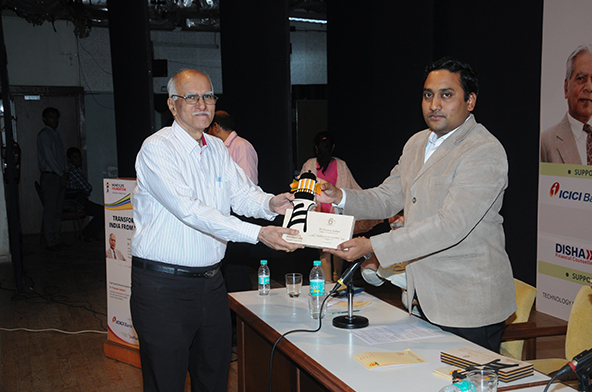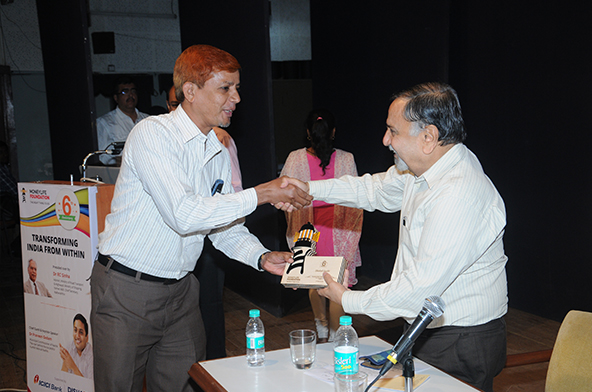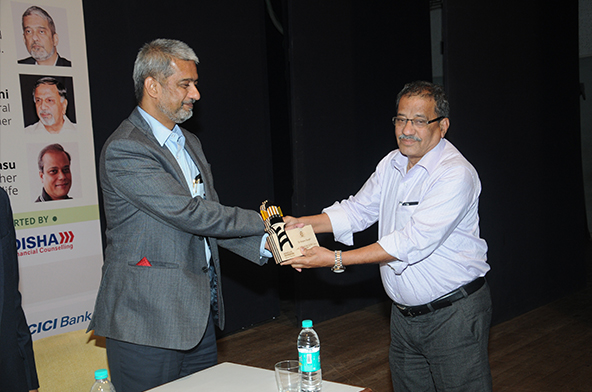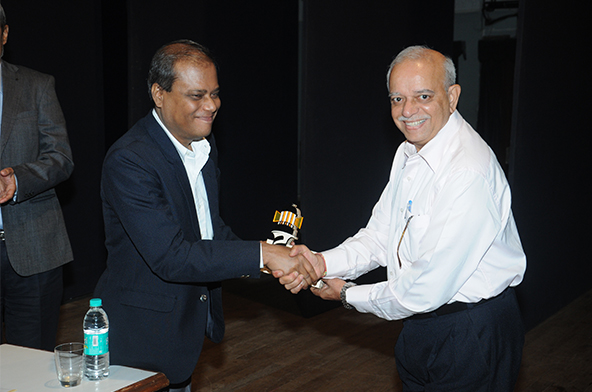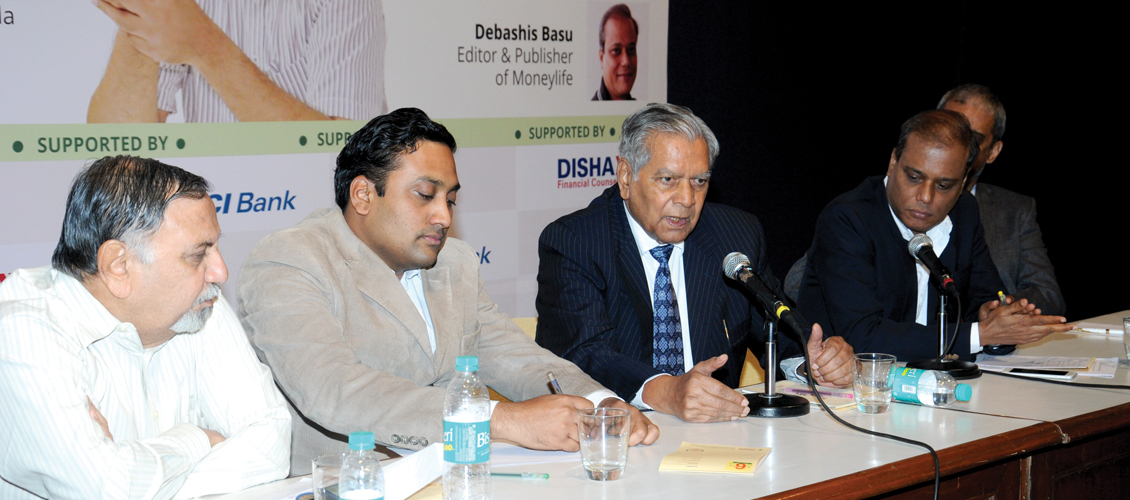
“Do not break law, but you can bend it and if you do not have any malafide then the government will not take any action against you,” was the advice given by Dr RC Sinha to government officials. He was speaking at Moneylife Foundation's 6th Anniversary in Mumbai on Saturday.
Dr Sinha, Advisor to the Ministry of Road Transport & Highways and Ministry of Shipping and former Additional Chief Secretary of Maharashtra said, “You have to get out tactfully from difficult situations. Within the system, we as government employees can do good for public provided we are ready to take risk from those with vested interests.”
Dr Sinha is man who turned around Navi Mumbai, built over 40 flyovers in Mumbai, the Mumbai-Pune Expressway, planned the Cybercity and 30 projects in Hyderabad, MIHAN project in Nagpur and several similarly important projects.
Dr Praveen Gedam, the keynote speaker at the event and Municipal Commissioner at Nashik, has used technology for better governance, while tackling entrenched corruption in each of his jobs. While there are several measures undertaken by the physician-turned-IAS to help the administration to improve services and provide relief to citizens and resolve their issues faster, Dr Gedam cited four specific examples. One was how he devised a strategy and camp up with sand mining approval and tracking system (SMAT) to curb illegal sand mining. Using the same monitoring and online reporting system, he put a brake on loot at the famous Tuljabhavani temple. He also spoke about the efforts taken by the administration for a smooth and incident free Kumbh Mela at Nashik and new apps launched to provide complete information to citizens and also help them file complaints and get it resolved in transparent manner.
Curbing illegal sand mining in Solapur district
The Ministry of Environment and Forest (MoEF) has come out with new guidelines on sand mining, which are largely based on a model developed and implemented by Dr Gedam, while serving as District Collector at Solapur in Maharashtra.
Solapur has always been notorious for the illegal sand mining and mafia gangs that operate without fear due to support from politicians. When Dr Gedam took over as District Collector of Solapur in January 2013, he too faced stiff opposition from the sand mafia gangs. Illegal sand mining was rampant in Solapur district as sand excavation was happening from sand beds that were not part of any auction. Once sand was mined illegally over and above the permitted quantity, the sand miners used to even produce forged receipts. The same forged receipts were also used multiple times, Dr Gedam said.
The Solapur district administration under the guidance from Dr Gedam came out with a plan for e-tendering, e-auction and digital monitoring for sand mining. The administration set up control rooms at sand ghats on the only access road. All other access roads to sand ghats were closed. The administration also brought in SMS-based transport permits, developed new online software, mahamining.com for multi-layered tracking on sand mining and also installed closed circuit television (CCTV) cameras at several places. The whole system was known as sand mining approval and tracking system (SMAT).
The results of this e-governance initiative were astounding. With these measures, the Solapur district administration increased its income to Rs78 crore (in FY2013-14) from a mere Rs22 crore (in FY2012-13) by e-auctioning, increased collection of fines and fool-proof monitoring of sand mining through SMAT. These efforts from district administration also saw about 425 first information reports (FIRs) filed against the illegal cartels of sand mafias in FY2013-14 alone.
Plugging the loot at the famous Tuljabhavani temple
Dr Gedam, while serving as District Collector at Osmanabad, not only plugged the loot at Tuljabhavani temple at Tuljapur but also helped the temple to obtain an ISO certificate in the clean-up process. After he sensed that donations were pilfered on a massive scale, Dr Gedam used multiple direct and indirect methods at the famous temple, which led to astounding results. The income of the temple, which was hovering around Rs7 crore a year, some five to seven kgs of gold and 40-45 kgs of silver, jumped four times to Rs24 crore, excluding gold and silver donations.
In order to make the pilgrimage of people to Tuljabhavani temple easy and less troublesome, Dr Gedam improved physical amenities including a modern darshan mandap, built three modern bhakt niwas (lodging) using traditional designs, developed gardens and improved roads. He started or completed several works in Tuljapur that enhanced facilities and amenities of the Tuljabhavani.
"Tuljapur gets millions of tourists every year. The entire local economy revolves round it. It relates to livelihood as well. Better civic amenities and recreation was needed there. As government appointed trustee of the Tuljabhavani Temple Trust, we tried our bit to improve amenities in and around the temple," is what the humble but determined IAS officer has to say.
As the District Collector of Osmanabad, Dr Gedam was ex-officio Chairman of the Shree Tulja Bhavani Temple Trust. Due to the efforts of Dr Gedam and his team, the temple received ISO certification, a first for a religious shrine in Maharashtra. The certificate was issued taking into account the temple's transparent administration, dress code, cleanliness and other matters.
Last year in August, a museum conceptualised and whose construction started by Dr Gedam, was completed. This museum will have exquisitely carved silver idol of Goddess Tuljabhavani weighing about 200 kgs donated by one devotee, about 2kgs of gold ornaments as well as replicas of antique and historic documents and articles.
The Kumbh Mela
Every 12 years, Nashik witnesses influx of millions of people, including devotees and sadhus. Apart from building, modifying infrastructure, what withstood in last year’s Kumbh at Nashik was the effective use of technology. Be it the use of drones with cameras to control and manage crowds or cloud computing or a system to monitor threat of epidemics and a mobile app that gave information on hospitals, hotels in the city, trains and bus services available as well as information on nearest pilgrim spots like Shirdi and Bhimashankar.
For the two-month long Kumbh Mela, the state government had sanctioned a budget of about Rs2,200 crore including Rs1,200 crore buy the Nashik Municipal Corp. Dr Gedam said, “We (NMS) built a 26-kms long underground drainage and a 40kms long water supply line to the Sadhugram, the temporary township created for sadhus. It could accommodate around 3 lakh sadhus. We also increased number of ghats to seven from two.”
‘Smart Nashik’ app
Last year in September, the Nashik Municipal Corp launched an interactive mobile app aimed at bringing in transparency and providing facility to citizens. Talking about the idea behind launching the mobile app, Dr Gedam, said, “With the mobile app, citizens can participate in the work of the corporation, give suggestions, register complaints and use the facility on online payment of bills, register births or death, seek building plan approval, all aimed at clean, efficient and transparent working of the corporation.”
His emphasis is on increased use of technology for providing civic services as well as brining transparency in all transactions. This is the reason, why all details about a civil work in Nashik, including name of the contractor, value, defect liability period as well as actual photos before, during and after the work are made available online. “If this is not done, we do not pass the contractors’ bills for payment. Not a single rupee in Nashik is spent unknown to the public,” he added.


